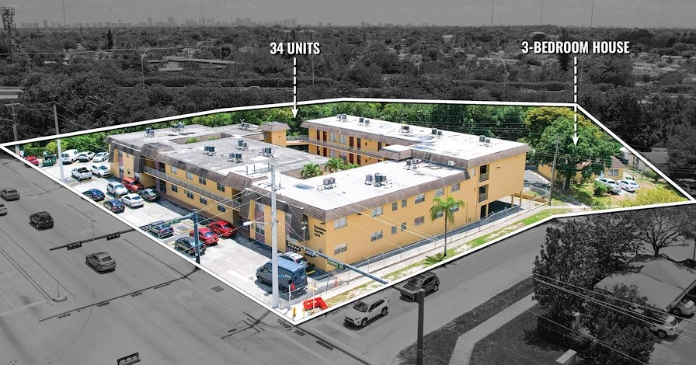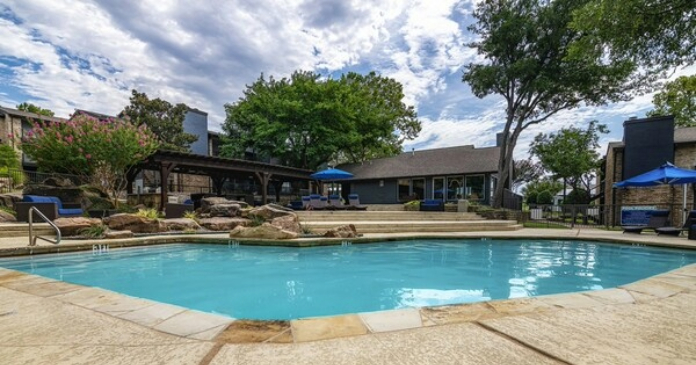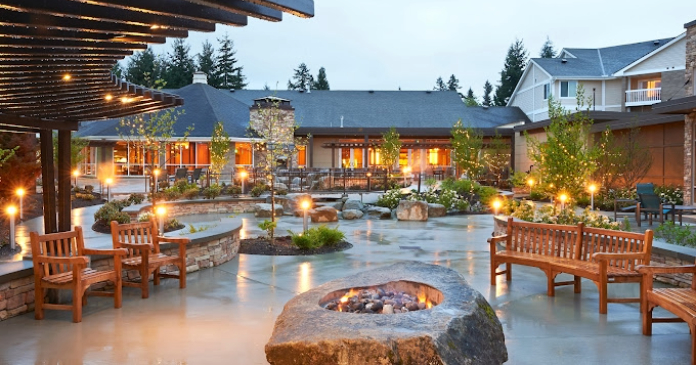Yield PRO TV presents NAHB Power Hitters. Host Linda Hoffman talks with Paul J Doocy, Co-Head of Real Estate of CP Capital.
Transcript: NAHB Power Hitters interview. Linda Hoffman with Paul Doocy, recorded October 14, 2021
(music)
Linda Hoffman: If only the supply chain could move as quickly as the current flush of capital. Available debt and equity capital may be the one place where supply is looking for demand. All this while the need for housing units continues to grow ever greater.
Lack of land, supply chain disruptions, rising fuel prices, greater and greater regulation and … well, the barriers to new product continue to hold down development.
Demand has outstripped supply since the 80s, and it appears will never catch up. Multifamily asset performance is coming in hot on the coasts, and throughout the Sun Belt. As of Q3 residents are still leaving the urban cores, but high quality multifamily continues to be durable.
All this to say, capital has moved away from traditional asset classes like equities and bonds, and real estate has become a great alternative. Today’s guest is someone who knows a lot of about the flow of money into real estate. Paul Doocy is co-head of real estate at CP Capital. Founded in 1989, CP Capital has invested $15 billion in U.S. real estate including over 70,000 residential units.
Paul, it’s great to have you on the show.
Paul Doocy: Thanks, Linda. Appreciate it.
Linda Hoffman: Paul, CP Capital has made a lot of news recently. Tell us about yourself and CP Capital.
Paul Doocy: Sure. A little about myself. I live in Connecticut. This is the state that I grew up in. I live in a different part of the state now, but I was gone from New England after college. I was living in Dallas for about 14 years, and then, when I joined this company, I came back note to the Northeast.
The company’s based in New York, in the Rock Center area. My wife is working in the neighboring school district. She’s a special ed teacher. We have two sons. One lives in San Francisco, and one lives near us in Connecticut. And, if I had my preference, I’d be outside. I like to go running. In the wintertime, I’m happy to get on the ski slopes. The less time looking at screens, more time outside, is my preference.
The company is, as Linda said, 32 years old, and from the start they made investments in apartments. Over time, I think that the general description you could give, is that we’ve had opportunistic investments in U.S. apartments, and the capital backing those investments has been German private wealth, and then at the same time, we had more conservative investments in office, industrial, and retail, and the capital there was largely institutional German capital.
Overseas capital brought into the U.S., largely German. Over time, we’ve done less in the office industrial retail area, basically over the last 10 years those institutional portfolios were being sold. And, as of 2019, we really have none of that anymore, as the end of 2019. On the apartment side, when I joined 28 years ago, so, close to the start, we started doing apartment development joint ventures. So, opportunistic, coming in with developers at the start of construction, and, then, selling properties after they were leased up.
And, the nice story there, and, certainly, you will talk more about our focus on that, which is that, ever since that 1994 start in that category, we’ve done apartment developments every single year except 2009, which, fortunately, we had capital available to buy some properties, and for a number of years, made some good value-add buys. But, actually, by 2010 we were back doing some development. So, that’s our focus. That’s been our consistent focus, and, today that’s sort of, really our singular focus is these apartment development ventures.
Linda Hoffman: CP Capital recently had a change in ownership and a corporate re-branding. What led to these changes, and will they affect CP Capital’s investment strategy?
Paul Doocy: So, the changes came from. jointly, from our ownership and the management. The ownership was German, in terms of two German families, and they were focused a little more on their private equity business, and their wealth management business, and they wanted to continue to give it a greater focus.
And, we were looking to expand a little further, so from a management standpoint we were looking to bring in some strategic partners that would allow us to have another capital source, in addition to the strong base of German private capital that we raised. We also, ideally, want to find someone who was active in multifamily housing who could look with us at other strategies within that space. And, certainly, the third thing we were looking for was a cultural fit. We’ve got a lot of people who’ve worked together for many years and we wanted to have a new strategic partner that would match up well with us, just like our previous owners had—just culturally in terms of the field of what we were doing every day, and how we interact with each other, and work together.
So, that’s all come about, and it translates into a name change, but, from the other part of the question, it doesn’t change what we’re doing. Strategically, as I said, we’ve been doing these apartment joint ventures consistently for almost 30 years, and that’s still our focus. So, that’s what, the type of investment we’re making right now, and that’s what we’re targeting for the next couple years.
Linda Hoffman: So, why does CP Capital focus on multifamily rather than other commercial real estate sectors?
Paul Doocy: Well, you know, part of it is a pretty basic demographic story. It is a case where the U.S. has population growth, there is household growth, there’s a need for housing. So, part of it is that simple—that there’s a need for this product, specifically, though when you look at the history of apartments, it’s a stable asset class. It tends to stay well occupied, and we tend to have consistent, positive rent growth.
And, then, another aspect of it is simply good supply-demand balance. There are times when it gets a little out of whack, but, really, for much of the time we’re falling short. And right now, overall household growth versus new supply of housing, there’s a gap there. And, it’s a shortfall in terms of producing houses, and in terms of producing apartments. So, that’s a good thing that’s in place most of the time: good supply-demand balance. And, then the final thing right now, and again, it’s a demographic story that’s been positive all along with population growth, but with growth, but with the millennials, that’s a big group, and they are marrying later, they’re buying a house later, they’re renting longer, and, even now, if they’re at the point where they would I like to be in a house, maybe, they’re going to rent a house or rent an apartment. So, I think the demographic lifestyle story is one that continues to be strong for apartments.
Linda Hoffman: One of CP Capital’s preferred investment strategies is to look for value-add opportunities. A rather popular strategy. Have you found it harder, recently, to find opportunities that meet your objectives for investment returns?
Paul Doocy: In the value-add category, as mentioned, we fortunately had capital in 2009, which was a great time to be buying, and, typically, the people who were selling probably shouldn’t have been, so, that was a perfect time. It continued for a number of years, and we made acquisitions, and did development ventures, but, I would say, when you get to 2015, or 2016, I don’t know if we’ve done any since then that are these value-added acquisitions. We them in the same way. We team up with a local expert, someone who’s managing properties in that market, and someone who has a construction renovation team to do it. We did them in ventures with good operators but in in the last for five years we’ve really only done development ventures with good operators. But, in the last four or five years, we’ve really only done development ventures. We’ve still found that there’s a value there, a value-play there. There’s an ability to make a good opportunistic development, and is nice spread between what we can build them for, and what they can be sold for once they’re built and stabilized.
But, we stayed away from the value-adds. It’s gotten to too competitive and too difficult.
How have you adjusted your business approach to account for the recent surges in commodity prices and the shortages of construction materials and labor?
Linda Hoffman: That makes sense. How have you adjusted your business approach to account for the recent surges in commodity prices and shortages of construction materials and labor?
Paul Doocy: Yes. So, a key for us, obviously, is who are we partnering with? So, we’re doing all these—we’re an equity partner. We’re coming in, and we’ve got a lot of history, as you’ve said. We’ve seen all sorts of things that can go wrong, but, fortunately, over that time, where we’ve consistently been in the market, we’ve developed very strong relationships. So, looking at our partner, we’re counting on them, first, to be addressing the things you mentioned—the pricing. They’re coming to us with a budget, they’re refining how much they’re putting in there as contingency—escalations for lumber was going on, now that’s come back down—but there’s other things going up in price. So, it’s a matter of looking at that with our developer partner. We do have construction people in-house, couple of ones that are construction background, they’re looking in detail at the budgets, they’re looking in detail at the team, and we’re trying to be helpful, rather than just be a money partner, we’re experienced enough that we can bring something else to the table, and can help in those situations. But, I’d say that the main thing that’s going on is, we’re just seeing contingency in the budgets, and we’re fine to work with that, and, then, as you get closer to being ready to start, you can start to finalize those numbers. And that’s been working in the market.
At the same time as costs have gone up, the market has gone up, too. Some strong rent growth is almost everywhere in the first half of this year, so, some instances where we thought, oh, this is going to be the problem, the costs have gone up. We really saw the revenue side go up even better. So, we’ve got things that we were concerned about that look better today than that we thought they were going to.
Linda Hoffman: How does inflation enter into that?
Paul Doocy: Yeah. I think, historically, apartments are a good place to be in, relative to inflation. Again, they have a steady rent growth within apartments. The nice thing is you’re dealing with a one-year lease, typically, and so you can adjust things. If pricing should go up, it can. We’re not stuck with a five-year, or 10-year lease term that’s put us in a difficult situation.
So, you know, historically, it’s been a good space to be in. We’ve been in it consistently, and, so, inflation has moved around over those 30 years, but, I would typically say to someone, it’s always been a good time to be doing apartments. Sometimes, it’s better to be in one state, or region, then another, and we recognize that, but, it’s a big country, and there’s always opportunity somewhere.
Linda Hoffman: When, if ever, Paul, do you see the urban core coming back?
Paul Doocy: Well, I see some of that happening right now. Certainly, young people who like the aspects of the urban core. Talking with some of the developers we work with who have some urban projects and were very suburban focused, but, they have some urban ones. You know, they’re seeing pretty good strength in different locations. Not an area that we focus on. It’s not where we’re trying to be, really. The bigger urban markets, the bigger major markets, we’re still tending to try and be in the suburbs of those areas. So, I can’t say I’m the best one to opine on it, but my conversations have indicated that they’re seeing recovery, and in some markets that the black band was in pretty good shape. So, that it being a nice performance of property.
Linda Hoffman: I’m sure that strategy paid off during COVID.
Paul Doocy: Yeah, yeah, that one did. I mean, one thing that was a factor in COVID was the constructions, if you look at development, and some of the major markets were really shut down, at least for a while in their cities. But, fortunately, the suburban location that we were in, you could continue working, and in most places, ultimately, you could, the construction work was considered vital, and was allowed to happen. But there were some markets where you couldn’t, and fortunately, we didn’t have much of a delay terms of the actual construction activity.
Linda Hoffman: CP Capital has investments in 30 states, including all of the fast-growing usual suspects. However, you also have investment in states losing population, like Mississippi and Illinois. How do you find investment opportunity in a slow-growth region?
Paul Doocy: Yeah, I think some of those are specific types of assets. I mean, Mississippi was a student housing property at the University of Mississippi. So, a large University, one that is well thought of in terms of the student housing market, and that’s where that investment was focused. So, sometimes within our portfolio we’re including some student housing acquisitions, or development. We don’t have any right now, but, that was the Mississippi circumstance. And that could be true for some of the other ones that we go in terms of where we’ve made investments.
Illinois is—you got Chicago—so Chicago, you know, there should be opportunity there, the major city, there are some opportunities in the city, and, then, we’ve done things in the suburbs. We have a project in the suburbs now. I’d say the difficulty there, in the suburbs, is a little more related to property taxes. It’s often a tough market, and right now, we’re struggling with that in terms of the tax assessment now that this property we have is stabilizing, and what are the taxes going to be? So, though, it has that issue, which is a bigger issue there than in some other places.
But, otherwise, if we’re in place—a good example that shows up on there is St. Louis. And that was tied very much to a developer who is based in St. Louis, who we were doing things with them previously in the Carolinas, and in Phoenix. They happened to be based in St. Louis. But coming out of the recession, they found some great opportunities in the nice St. Louis suburb. And those turned into great joint ventures that we did with them, and we were comfortable, because of them, and because of our experience with them. So, there are times where a market doesn’t show up on the top of the growth list, but, we got partner who’s an expert.
Linda Hoffman: That is always beneficial. CP Capital is an active trader of commercial real estate. How would President Biden’s proposed changes to the 1031 exchange rules impact your business model?
Paul Doocy: For us, we’re not doing anything with the 1031, ourselves. We have closed end funds, we get the proceeds from a sale, and we distribute them back to investors that are part of the fund. We’re not doing anything with that exchange.
Where it comes in for us is the buyers of some of our properties, so, once the property is leased up, we’re typically selling right away. We go to the market. There’re institutions. There’re private buyers, and that includes some that are doing a 1031 exchange. At times, they’re the most aggressive. They’re wanting to make that change happen, they’ve got a deadline that’s a part of that process, and, so, sometimes they’re the most aggressive buyer. So, it could impact the buy-side, in terms of people buying our property. But us, indirectly, in that way, but, not directly in terms of a strategy that we pursue with the proceeds that we receive.
Linda Hoffman: Well, thanks for the clarity, Paul. It’s good to know the capital is there. A few key breaks in the economy and we could see the flood gates open. It’s good to have you on the show.
Paul Doocy: Oh, I appreciate it, Linda, and happy to talk with you.
Linda Hoffman: There’s a lot of money looking for a home out there, literally. Builder sentiment is high. Performance in most markets is strong. We’re also seeing high levels of foreign capital looking to be deployed in the U.S. Now, more than ever, we need conditions to open up to deploy. Regardless, housing will continue to be the market sweetheart for some time to come.
That’s all for today. Thanks for joining us. I’m Linda Hoffman. See you on our next exciting episode of NAHB power hitters.
(music)












